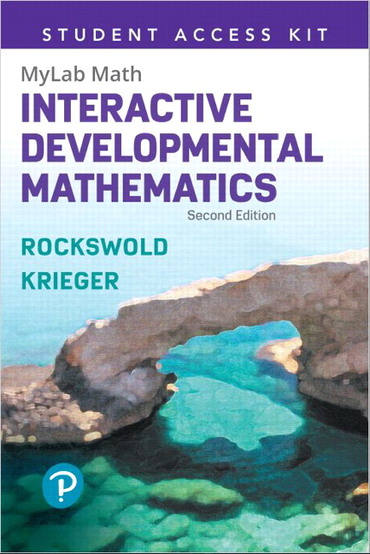1 Whole Numbers
1.1 Introduction to Whole Numbers
1. Reviewing Natural Numbers and Whole Numbers
2. Understanding Place Value
3. Writing Whole Numbers in Word Form
4. Writing Whole Numbers in Expanded Form
5. Graphing Whole Numbers on the Number Line
6. Reading Bar Graphs and Line Graphs
7. Reading Spider Charts
8. Reading Tables
1.2 Adding and Subtracting Whole Numbers; Perimeter
1. Adding Whole Numbers without Regrouping
2. Adding Whole Numbers with Regrouping
3. Using Properties of Addition
4. Recognizing Words Associated with Addition
5. Subtracting Whole Numbers without Regrouping
6. Subtracting Whole Numbers with Regrouping
7. Using Properties of Subtraction
8. Recognizing Words Associated with Subtraction
9. Solving Equations Involving Addition and Subtraction
10. Solving Perimeter and Other Applications Involving Addition and Subtraction
1.3 Multiplying and Dividing Whole Numbers; Area
1. Multiplying Whole Numbers
2. Using Properties of Multiplication
3. Multiplying Larger Whole Numbers
4. Recognizing Words Associated with Multiplication
5. Dividing Whole Numbers
6. Using Properties of Division
7. Performing Long Division
8. Recognizing Words Associated with Division
9. Solving Equations Involving Multiplication and Division
10. Solving Area and Other Applications Involving Multiplication and Division
1.4 Exponents, Variables, and Algebraic Expressions
1. Understanding Exponential Notation
2. Squaring and Cubing Numerical Expressions
3. Finding Powers of Ten
4. Using Variables
5. Recognizing Algebraic Expressions
6. Evaluating Formulas
7. Translating Words to Expressions and Formulas
8. Solving Equations
1.5 Rounding and Estimating; Square Roots
1. Rounding Whole Numbers
2. Estimating and Approximating
3. Solving Problems Using Estimation
4. Estimating Data Graphically
5. Finding Square Roots
1.6 Order of Operations
1. Applying the Order of Operations Agreement
2. Evaluating Algebraic Expressions
3. Translating Words to Symbols
1.7 More with Equations and Problem Solving
1. Identifying Equations and Expressions
2. Recognizing Like Terms
3. Combining Like Terms
4. Applying Arithmetic Properties
5. Checking a Solution to an Equation
6. Applying a Problem-Solving Strategy
2 Integers
2.1 Integers and the Number Line
1. Introducing Signed Numbers
2. Finding Opposites
3. Working with Integers and Their Graphs
4. Comparing Integers
5. Finding Absolute Value
6. Solving Applications Involving Integers
2.2 Adding Integers
1. Adding Integers That Have Like Signs
2. Adding Integers That Have Unlike Signs
3. Recognizing the Addition Properties for Integers
4. Adding Integers Using a Number Line
5. Adding Integers Using Symbols
6. Solving Applications Involving Addition of Integers
2.3 Subtracting Integers
1. Subtracting Integers
2. Adding and Subtracting Integers
3. Subtracting Integers Using a Number Line
4. Subtracting Integers Using Symbols
5. Solving Applications Involving Subtraction of Integers
2.4 Multiplying and Dividing Integers
1. Multiplying Integers
2. Recognizing the Multiplication Properties for Integers
3. Multiplying More than Two Integer Factors
4. Dividing Integers
5. Finding Square Roots of Integers
6. Solving Applications Involving Multiplication and Division of Integers



